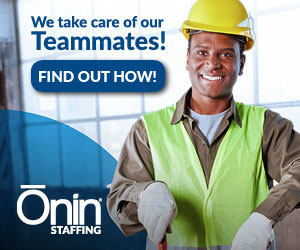Today, it feels like a “Now Hiring” advertisement is everywhere you turn. We hear the same mantra from employers: “We just can’t find enough talent to fill all the open positions.”
There aren’t enough skilled people in the workforce to fill the jobs, and the national skills gap continues to widen. As a result, many companies have turned to workforce development as the answer to the employee shortage.
Workforce development is a legitimate solution to a pressing problem that provides enormous opportunity for individuals and companies.
But, what does workforce development mean?
Workforce development has been defined in many ways. To some it means “training” or “policy,” and to others, it is a single “program” or an educational “initiative.”
At its core, workforce development is an interconnected set of solutions developed to meet employment needs that directly improves people’s lives. These interconnected solutions are embedded in a workforce development ecosystem that is linked to economic demands.
Too often, workforce development is treated like only one solution, for instance, training people for jobs. This short-sighted approach limits the scope and effectiveness of the programs, and we risk constructing a lopsided model that results in a wasted effort and a faulty system.
Linked Like A Puzzle
As a child, I remember being handed a puzzle box full of uniquely-shaped pieces. I would quickly fit the side and corner pieces together, but when I ventured into the puzzle’s middle, I became lost.
Looking at the individual puzzle pieces only perplexed me further. I needed a point of orientation to guide me.
The image on the front of the box gave me the direction I needed to connect the miscellaneous pieces into a coherent, holistic image. Shapes fell into order, and they soon became something greater than what they were independent of one another.
Trying to navigate the realm of workforce development can be a similar experience. Various trainings across the region, individual community efforts, employer initiatives, government policies and other efforts all seem to share the same goal of getting people into jobs.
The only problem is, they lack a comprehensive vision — the “puzzle box top” — to frame the entire system. One group preaches this program while another group claims they have something similar for workforce training.
Each “puzzle piece” program signals they are equally important, but neither knows how they fit together in the overall puzzle image. In these cases, what is usually needed is not another program but a vantage point to determine how these programs work together towards a shared solution.
The repercussions of this real-life puzzle are far-reaching. Without a unifying vision, real job seekers miss out on satisfying and lucrative opportunities, while companies lack critical employees.
Before jumping into the workforce development mix, we need to look at the big-picture “puzzle box top” to know how everything interconnects.
Four Main Pillars
Each workforce development solution needs to be categorized so it can be framed within the overarching big picture. To do this, four main pillars can be used to classify each initiative: industry, education, government and community.
These pillars create the “puzzle box top” we can use to see how each piece fits into the whole picture.
With a well-rounded vision, each initiative can fit together to create something truly powerful.
These pillars are not all-encompassing, but when fitted together, the image of workforce development gains clarity. Each pillar is strong enough to stand alone, but stronger when linked together to build a talent pipeline for the future.
Industry
Employers are strong drivers of workforce development initiatives and also the pacesetters, in part, because they have the most at stake. If they can’t successfully create or manage these programs, employers risk having no viable workforce at all.
This is especially true now as 75 million baby boomers steadily approach retirement. Companies need a solid workforce plan in place to replace these future retirees, which includes finding new talent as well as upskilling their current workforce. Employers are a crucial pillar since they are the final destination for any workforce development effort.
Education
The education pillar can be seen in spaces such as K-12 providers, technical career education, universities, community colleges and other training centers. From all of these spaces, education creates the future workforce.
This pillar is powerful since it has a heavy influence over the future of economic growth and trends. If this pillar is aligned properly with the others, great things can happen over time for workforce development.
Government
The government, state municipalities and career centers are official establishments with economic development at their core. The Workforce Innovation and Opportunity Act (WIOA) is a significant driver in this space along with other policies, tax incentives and employment opportunities that promote inclusion and diversity. These programs and organizations have a passion for the success of workforce development.
This pillar supports the others by providing a boost to the talent pipeline. Facilitation can come in many forms such as grants for training classes, career assistance centers or policies to ensure the hiring of minorities. When these policies and programs are utilized by the other pillars, it can lead to growth in the talent pipeline.
Community
The community cannot be ignored when looking at the whole picture of workforce development. This is where workers, businesses, government officials and educators live and play. Within the community are partners that add to the overall success of workforce development. These community players include the local chamber of commerce, nonprofits and religious organizations.
The community pillar serves as a liaison to the other pillars and helps break down any barriers that may pop up. If the local community college can’t see eye-to-eye with a local business or government entity, it may take a community initiative stepping in to help all parties understand how they can mutually benefit. This neutral party can often bring all the pillars together to become a well-oiled machine.
The struggle to find talent in this tight labor market will only continue, but that doesn’t mean this struggle can’t be lessened. Moving forward, we must continue putting these pieces together and forming a new vision of what our workforce development strategy can become.
Consider how a table is more stable with four legs rather than just three or two. Similarly, a workforce development solution is solid and functional when all four pillars work together.
Once each initiative is classified into its proper pillar, we can begin to see how each will fit into the larger picture of a great workforce development strategy. This can re-shape an entire region and drive economic growth to new heights.

Garth Thorpe
The Ōnin Group
Garth Thorpe stepped into our newly created position as Workforce Development Manager in early 2018. Garth is focused on creating new talent pipelines for multiple industries through the High School Ready-to-Work program. Before joining Ōnin, Garth worked in West Africa and South America, equipping aging-out orphans with life and job skills so they could become gainfully employed in the private sector. gthorpe@oningroup.com






